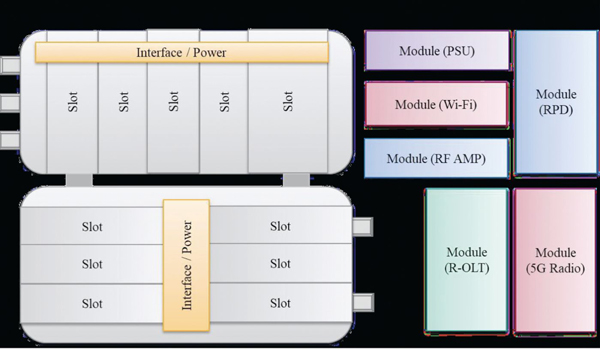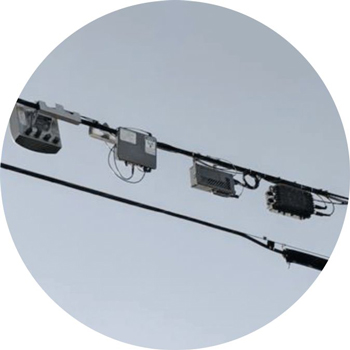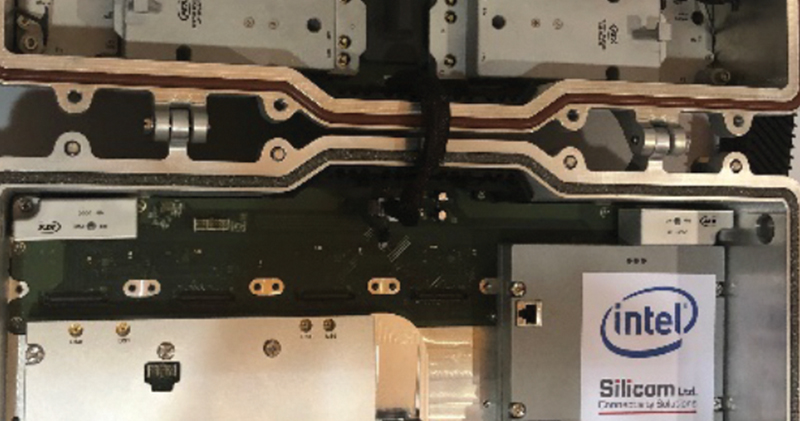What Problems Are We Trying To Solve With The Generic Access Platform?
By Matt Petersen
Do you ever run into new manufacturers trying to enter into the cable market and they just can’t figure out how to build a node enclosure to meet your expectations, let alone your specifications? Ever worked with an existing manufacturer and quickly realized that they struggled getting the new technology to fit into their existing enclosures? What about trying to deploy new technologies and the length of time it takes field operations teams to splice and deploy the new enclosure into the hybrid fiber/coax (HFC) plant for that specific technology?
Two years ago, one of my key Principal Engineers walked into my office and asked me these types of questions, and then we pondered for a bit. We reminisced about six years ago that another cable operator tried to standardize the node but failed to get industry consensus with it. That initiative failed and did not materialize into a deployable product. Why was that? Was the timing for a standardized node too early? Was the integration of modules too complex? Was the cost for a standardized node a barrier? Whatever the reason for the failure six years ago, we both felt that it made sense to try to resurrect the effort again. At the time we started to evaluate a multitude of different technologies that needed to be placed into a standardized node enclosure. This process is still ongoing and is identifying some new challenges and opportunities. With the current landscape and proprietary nature of nodes this would require unique and customized node enclosures for each of the technologies. Based on the evolution of the network, it appears that the timing was right to push the effort forward and create a standardized platform that was based on an open framework. Hence the generic access platform (GAP) was reborn.
What is the GAP?
The genesis of the GAP is designing an open-based platform widely adopted by major operators that any manufacturer can build upon the actual “standardized” enclosure and modules that are pluggable into the GAP.
The first phase is to standardize the thermal dissipation, power consumption and electrical connectivity for use in North America. Similar to a computer rack in a headend, each rack unit can dissipate a certain amount of thermal energy and consume a certain amount of power. The specifications of the GAP enclosure will allow manufacturers to build modules according to these constraints and requirements. Each slot in the GAP will be allocated a certain amount of thermal dissipation and power consumption. The slots will have standardized connectors to access the high speed data plane for communication. If a particular technology requires more power or thermal dissipation than one slot can accommodate, the manufacturer has the option and flexibility to convert their module into two- or three-slot modules based on the requirements of the technology.
Later phases of the project will include a European style housing and smaller form factors of the GAP enclosures. There may be value in having a two- or three-slot version of the GAP enclosure versus the eight slot versions that are also being contemplated. The overall objective would be to enable the same modules that would fit in the large GAP enclosure to also interoperate with the smaller GAP enclosures without having to be reengineered.
What modules or technologies can be used in GAP?
In order to enhance service delivery platforms and network performance, there is a need to deploy network access technologies closer to the customers or to the edge of the network. The exact definition of the edge of the network (i.e., what and where) will be determined over the next decade and will be evolving. Emerging applications and technologies will have lower latencies and higher performance requirements. With that said, having a generic platform in close proximity to the customer that can easily adopt these technologies adds value for operators. Distributed access architecture (DAA) technologies like remote MAC/PHY, remote PHY, and remote optical line terminals (OLTs) will be some of the first modules developed as operators continue to expand their HFC networks to support the 10G network evolution.
Other technologies supporting mobile services and commercial businesses, (e.g., 5G, CBRS, wireless offload, DWDM, muxponders, Ethernet aggregation) will also have modules that would plug into the GAP enclosure slots. In the future, there will be additional use cases that have not been thought of, but the platform by design could easily adopt them and therefore the design will be future proofed.
If an operator does not anticipate deploying emerging technologies, traditional analog modules can be designed and built to be plugged into the GAP. This would allow operators to maintain and seed their existing network with a platform that can easily adopt emerging technologies later in the future. Who wouldn’t want a future capability in their network if the cost is relatively the same?
How does the GAP benefit the Industry?
There are many benefits by standardizing the variety of propriety interfaces in the existing HFC nodes that operators deploy today. Standardized interfaces help alleviate the existing barriers for new manufacturers to enter into the cable market. Manufacturers will no longer spend the development time and cost to build a proven hardened enclosure that meets cable industry specifications. It allows manufacturers to focus on what they really do well, the technology that goes inside the enclosure. It will drive manufactures to innovate in order to comply with the GAP specifications. We’ve already seen some of this occurring during the prototyping phase of the GAP project that was shown at both the ATX and Cisco booths during the recent SCTE•ISBE Cable-Tec Expo in New Orleans.
Having a “standardized platform” in the field also has many operational benefits for the operator. Currently, field technicians need to set up and splice a node into the plant. This has down time for customers while the splicing is occurring and is a bit of a lengthy process in itself. This occurs with each manufacturer’s proprietary node. Once a GAP node enclosure is deployed into the HFC network, deployment of any new technologies within that service group can be dramatically shortened without customer interruption. The field technician would only need to plug a module into the GAP node enclosure in order to deploy the new technology.
The health of the HFC network benefits with a standardized platform. No longer will there be a need to a have strand “sprawl.” As the number of unique nodes are eliminated and there is a common platform, the number of times the plant needs to be spliced is dramatically reduced. As fewer components need direct access to either power or the RF spectrum, signal quality on the HFC plant is not being compromised along with power efficiencies by using a common platform.
In summary, the initial release of the GAP enclosure specifications is planned for late 2019 to early 2020. The GAP specifications will support the new DOCSIS 4.0 specifications of 1.8 GHz and are planned to support up to 3.0 GHz. This way if there is a need to further expand HFC networks beyond 1.8 GHz, operators can upgrade their networks in a cost-effective and timely manner. The GAP platform is designed to last the industry for the next two to three decades, with the first deployments to potentially start in late in 2020.



Matt Petersen
Vice President of Access Architecture,
Charter Communications
Matt Petersen serves as Vice President of Access Architecture for Charter Communications. In Matt’s current role, he is responsible for architecture, standards and strategy of the access network. Over the last 13 years at Charter, Matt has been one of the key contributing individuals for the development of the national backbone, DOCSIS technologies, commercial solutions, and new product offerings. Matt has held numerous positions at Adelphia, Comcast and Charter over his 19 year career. He has studied at the University of Buffalo earning a Bachelor of Science degree in Business Administration.



